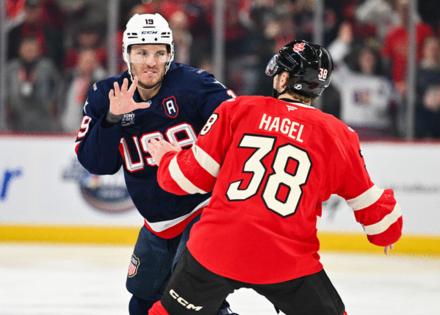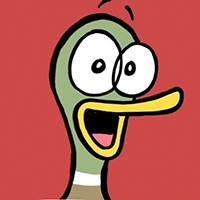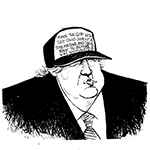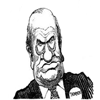Gustav Elvin: The 4 Nations Face-Off was a smash hit in every sense. But can the NHL capitalize on its momentum?
Published in Hockey
BOSTON — At this time last year, in the middle of All-Star weekend in Toronto, NHL commissioner Gary Bettman, alongside International Ice Hockey Federation president Luc Tardif, and NHL Players’ Association’s executive director Marty Walsh, made two announcements.
The biggest one, which scooped up all the headlines, was that NHL players would be returning to the Olympics in 2026, marking the first time the world’s top players would compete at the Winter Games since 2014 in Sochi, Russia. The second announcement was that the league would be holding a new, one-off “best-on-best” tournament to reintroduce international hockey and ramp up excitement a year out from the Olympics in Italy.
While the return of a best-on-best international tournament was welcome news for hockey fans, who had been deprived of any such event since 2016, public expectations were mostly tempered as no one truly knew what to expect from a tournament that looked purely like a money grab. That all changed last Saturday in the first nine seconds of the tournament’s marquee round-robin game between Canada and the United States.
Off the opening faceoff, Matthew Tkachuk, an All-Star player who is part-NHL throwback power forward, part-WWE wrestling heel, dropped his gloves and jumped Canada’s Brandon Hagel. One second later, off the very next faceoff, his brother, Brady Tkachuk, did the same against Matthew’s Florida Panthers teammate Sam Bennett, hilariously high-fiving his brother as he joined him in the penalty box. After six more seconds of uninterrupted play, J.T. Miller and Colton Parayko squared up for a third fight inside of nine seconds.
The 4 Nations Face-Off had not only arrived, but had already rocketed light-years past even the most optimistic projections.
The numbers were staggering. In all, 10.1 million North Americans watched Team USA beat Canada, 3-1, in Montreal on Feb. 15, while 9.3 million watched Thursday’s rematch on ESPN in the U.S., a non-Olympic record for hockey. The fights subsequently became the lead story of every sports program around the country, while hockey became the No. 1 topic at the office water cooler for the first time in who knows how long. The nation was captivated, as the tournament crossed over and reached people that hockey never has. Even First Take and Stephen A. Smith talked about hockey for once!
A perfect storm
The 4 Nations Face-Off was a smash hit for a couple of reasons, some of them the NHL and its players’ doing, and some of them more down to luck and timing.
The biggest reason the tournament worked was that the players took it seriously and treated it like every game was Game 7 of the Stanley Cup Final.
Hockey players are largely wired a certain way, with the sport’s culture rooted deep in competitiveness, hard work and teamwork. This tournament was the ultimate reminder of that, and when you add in the almost nine-year wait for a “best-on-best” measuring stick tournament, the players, including stars like Connor McDavid, Auston Matthews and Nathan MacKinnon, who hadn’t played for their respective countries in a previous event like this, were unsurprisingly ramped up to prove themselves against their peers.
Bettman may take credit for the idea but it was the players who made this into the spectacle it became.
The second factor was the progress of USA Hockey, namely the recent World Junior Championship successes and the emergence of more and more high-end young American stars. USA Hockey fans have believed for the past few years that the U.S. had closed the gap on Canada, and the 4 Nations was finally a chance to prove it.
The Americans entered this tournament on relatively equal footing from both roster and betting perspectives. Canada finally having a genuine rival added intrigue to a rivalry that had largely been one-sided over the years. Every rivalry is better off when the incumbent power has a worthy adversary. And in this case, absence made the heart grow fonder.
The event also came at the perfect time on the sports calendar, largely by design. With the Super Bowl in the rearview, baseball not yet started, and the NBA’s free-falling All-Star Weekend, the NHL seized a chance to go against maybe the weakest NBA All-Star product of all time.
That line of thinking paid off, as USA-Canada crushed the All-Star skills competition in the ratings and then benefited in the social media space from the aforementioned viral fights from the Tkachuks and Co.
“Hockey’s a different sport from the NBA. You can’t compare the cultures because of the way the game is played. You can step on an NBA floor and go through the motions. You can’t do that in hockey,” NHL analyst and former player P.K. Subban said. Judging from the TV numbers, Americans, at least for one week, agreed.
The other stroke of luck, at least from an NHL business perspective, was the political atmosphere that unfolded in the lead-up. Bettman and Co. couldn’t have foreseen President Donald Trump enforcing import tariffs on Canada, a measure that led to the booing of the American anthem in NHL arenas and then again at the 4 Nations Face-Off. Then there was the “51st state” declaration from Trump, which took the political tension to a whole other level north of the border.
The anthem booing, the political discourse, the border tension, the back-and-forth between Trump and Canadian Prime Minister Justin Trudeau on X, all added another layer of hate and meaning to an already passionate hockey rivalry.
As Canada coach Jon Cooper said Thursday: “Did we need a win? Not only our team, but Canada needed a win. The players bared that on their shoulders and they took it seriously. This one was different. This wasn’t a win for themselves. This was a win for 40-plus million people, and the guys knew it, and they delivered.”
Can the NHL capitalize?
The NHL certainly has enjoyed a moment, and Cooper went as far as to say that “Nothing’s done more for hockey in a decade than what this tournament’s done.”
The question now becomes can the league capitalize on it going forward?
The league has squandered previous chances to build on transcendent successes but things could be changing. Last year’s Amazon documentary, Faceoff: Inside the NHL, was a refreshing change from the NHL norm and a concerted effort to market the league’s biggest stars.
The league needs to continue to push its best players, as well as others with marketable personalities. Showing unprecedented access to McDavid’s raw emotion during the Stanley Cup Final made him a more relatable character and someone fans are now more apt to pull for.
The easiest way to promote the league is to mimic the NBA model where the teams with the biggest stars play the majority of the national television games. More McDavid on TNT in Eastern Time, more Matthews on ESPN, etc. The league tends to balance the TV games among its teams but why not dig in and give the people what they want: the best players, rivalries, and story lines on their TVs each week?
Alexander Ovechkin is chasing down Wayne Gretzky’s seemingly unbreakable career goal record; lean into that. Matthew Tkachuk and Hagel’s recent social media beef has created a rivalry; hype that drama ahead of their next matchup.
Speaking of rivalries, the NHL might as well put the Tkachuk brothers in front of every camera they can in the 12 months leading up to the Olympics. Love them or hate them, the duo — Matthew especially — is better at selling the game than anybody else. In a league with so many players who either don’t want to promote themselves or have been drilled not to, the Tkachuks are electric personalities who have embraced being villains over all else.
More guys taking a page out of their book equals more money for the league and more money for the players. That makes everybody happy.
Finally, the NHL has a tried and true recipe here: international hockey. More specifically, USA vs. Canada. You can’t have a 4 Nations every single year but you can have a cyclical series of international tournaments which the league has now committed to. After the Olympics in Milano Cortina next February, the World Cup of Hockey, which should see the return of Russia, and feature 4 Nations participants Sweden and Finland, and other stars like David Pastrňák (Czechia) and Leon Draisaitl (Germany).
Why not set up a best-of-five Summitt Series between the U.S. and Canada’s best in 2027? People can’t get enough of this rivalry, so don’t wait so long for it to happen again. Imagine a longer series between these two nations split between the U.S. and Canada with hockey supremacy at stake. That’d surely sell a few tickets and draw a few eyes.
©2025 The Philadelphia Inquirer. Visit inquirer.com. Distributed by Tribune Content Agency, LLC.







Comments